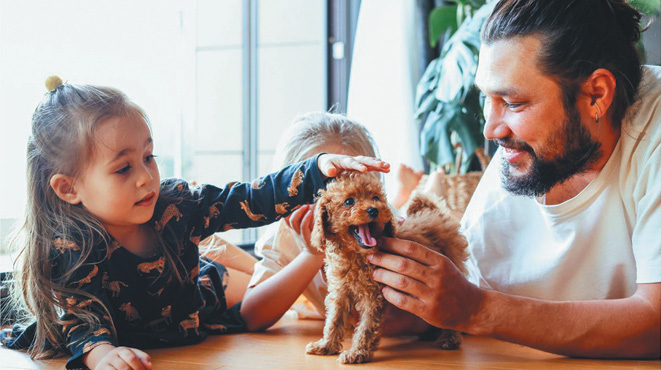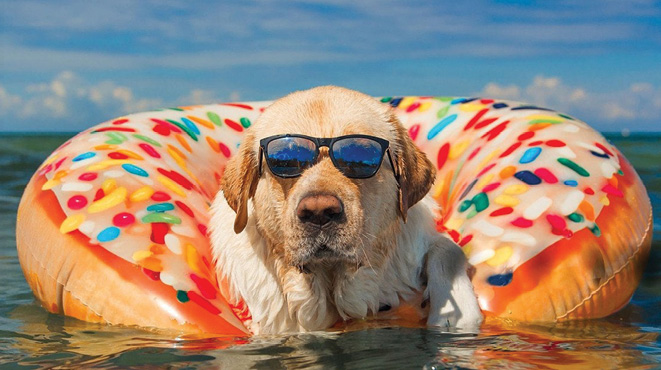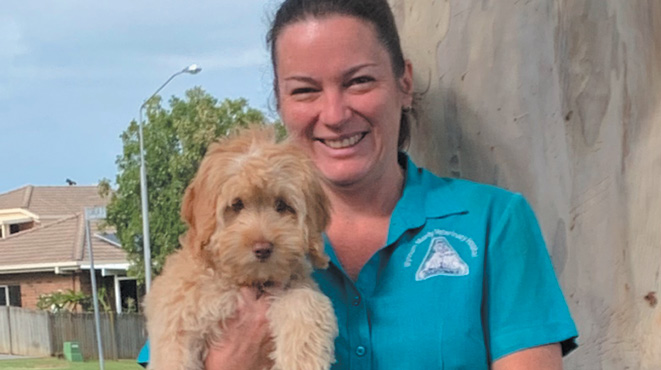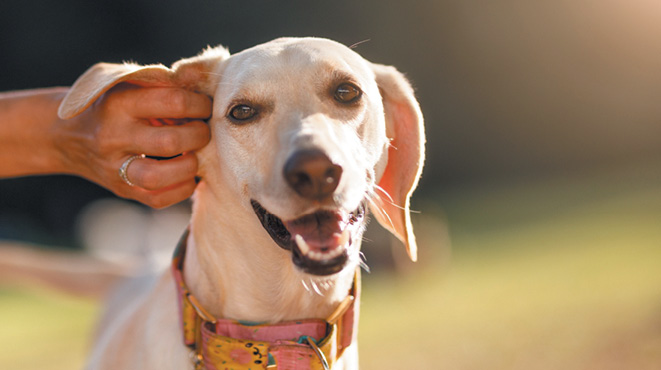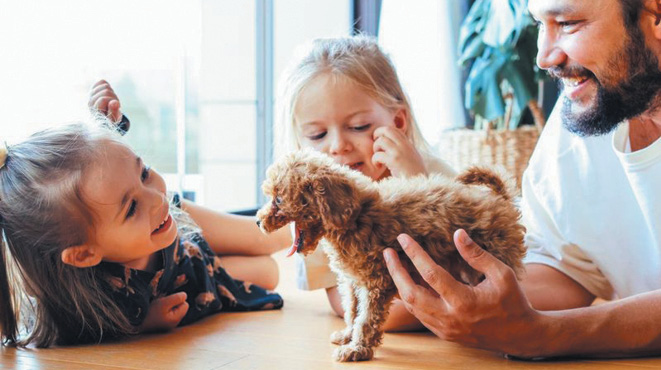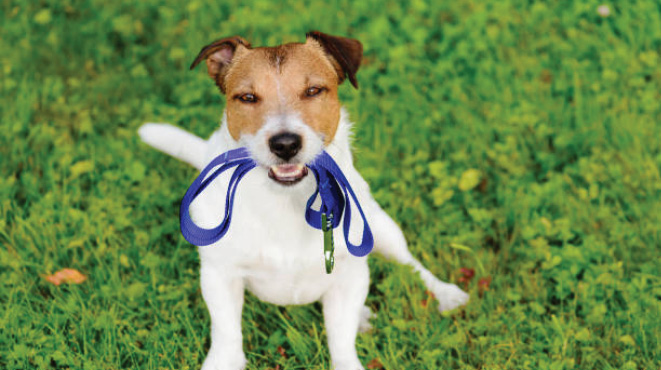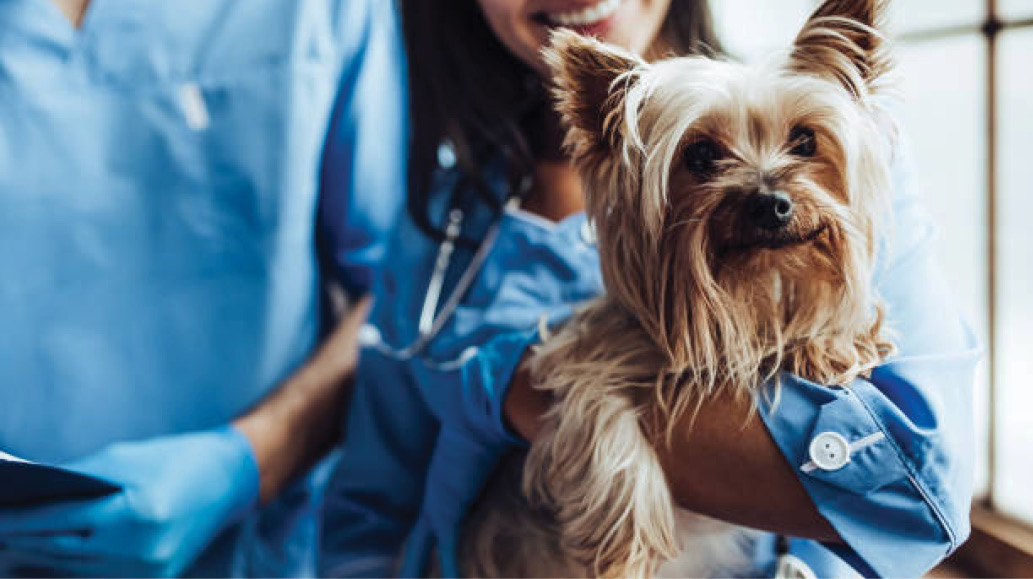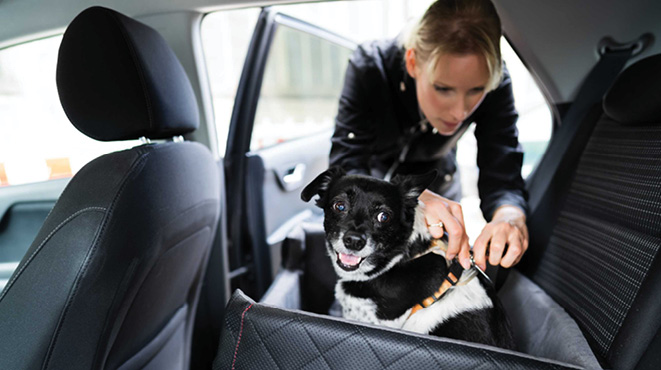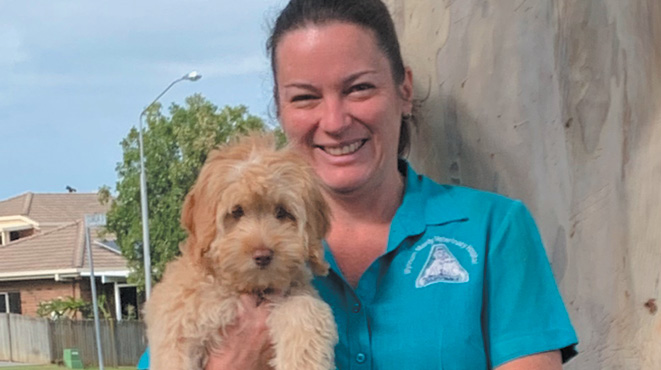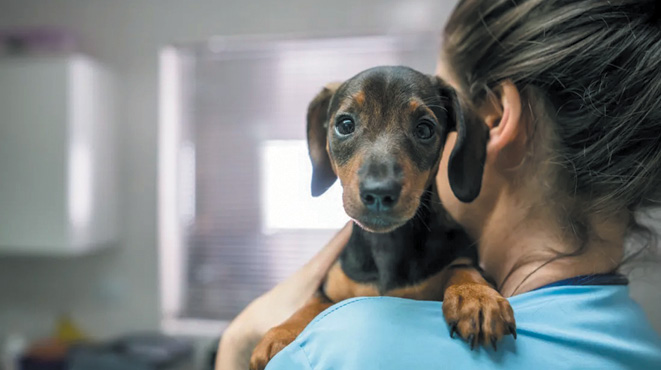BY DR NICKY THOMAS, WYNNUM MANLY VETERINARY HOSPITAL
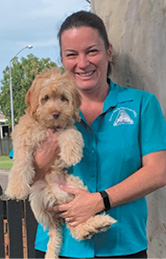 We’ve all heard of human athletes (whether it be rugby players, netballers or skiers) “doing a knee” and being ruled out of their competitive season. This is commonly due to a ruptured cruciate ligament. A ruptured cruciate ligament is also one of the most common orthopaedic injuries seen in dogs.
We’ve all heard of human athletes (whether it be rugby players, netballers or skiers) “doing a knee” and being ruled out of their competitive season. This is commonly due to a ruptured cruciate ligament. A ruptured cruciate ligament is also one of the most common orthopaedic injuries seen in dogs.
What is the cruciate ligament?
The word cruciate means to “cross over”. The cruciate ligaments are two bands of fibrous tissue in the knee joint that join the tibia (shin bone) to the femur (thigh bone), which allows the knee to work as a stable hinged joint. One ligament runs from inside to out, and the other runs outside to in – in dogs they are referredto as the cranial and caudal cruciate ligaments. Injury to the cranial (or front) cruciate ligament is the most common.
How does the injury occur?
The two causes of cruciate rupture are trauma and degenerative disease. Trauma involves a twisting injury to the joint, most often sustained when a dog suddenly changes direction while running. This puts a great deal of shearing force on the knee joint and results in the ligament tearing. The injury is very painful and results in an unstable leg that cannot bear weight.
Degenerative disease results from progressive weakening of the ligament due to repeated trauma or arthritis. The ligament may be partially ruptured and eventually progress to full rupture.
How is a cruciate injury diagnosed?
A history of sudden onset non-weight bearing lameness while running gives a high index of suspicion that a cruciate injury has occurred. Dogs will often demonstrate “toe touching” lameness, where the toe will occasionally touch the ground, but no weight will be put on the leg.
Your vet will examine your pet and check the knee joint for the presence of abnormal motion called anterior draw, which results from the loss of stability usually provided by an intact ligament. Sedation may be required to assess the joint thoroughly, and x-rays may be performed.
Treatment of cruciate injury
Your vet will discuss the best course of treatment for your dog, taking into account their age, weight and activity levels. Surgery is very commonly performed as a treatment for cruciate rupture. There are a number of different procedures for surgical repair, and again, your vet will discuss the best course of action for your dog.




